It looks like you're using an Ad Blocker.
Please white-list or disable AboveTopSecret.com in your ad-blocking tool.
Thank you.
Some features of ATS will be disabled while you continue to use an ad-blocker.
share:
As a software engineer, I've been hanging around computer networks since the early 1970s -- started with PLATO, moved to BITNet, Compuserve, AOL,
Usenet and finally to the World Wide Web (which most people confuse with "the Internet", but is just a subset of it, though I'll use the two terms
interchangeably.) Though a lot of that access was related to work, one always finds time to have fun, and one of my favourite pastimes is finding
kooks and reading what they have to say.
Now, one might say that ATS has a lot of kooks, but that's not really the case. A true kook is an over-the-top, round-the-bend, over-the-rainbow degree of craziness that often causes me to step back and, with respect, utter my best Neo from the Matrix "Whoa…" Over the decades, I've seen some of the best of the best kooks, and if you would like to dive into the world of some of these amazing speculators, I've prepared this "Illustrated Field Guide to Internet Kooks" to help you along.
The Golden Age of the Internet Kook
Sadly, while there are still plenty of kooks out there, we are past what I would define as the Golden Age -- about 1994 to 2000. This coincides with the rapid growth of Internet use and ends with the demise of many free hosting services during the bursting of the Dot-Com bubble. Kooks had long been around, I could remember them on PLATO back in the early 1970s, but the explosion of them on Usenet and the WWW in the 1990s was an amazing thing.
During this period, kooks were largely divided into two types -- interactive and dissociated. The former would happily (if insanely) answer questions and chat with interested people, while the latter would post their views and generally ignore any inquiries. Typically, interactive kooks stuck to Usenet, while dissociated ones focused on the web.
A classic Usenet kook - Serdar Argic, who had some sort of script (in 1994, somewhat advanced) to find any post in any group that referred to Turkey (even the bird) and post random rants about how the Armenians had committed genocide against the Turks, which was the opposite of what actually had happened. This, of course, led to mass complaints, as he spammed group after group, and he represented one of the first censorship debates on Usenet, as to whether to kill his posts or not. Classic kookery, I even have the t-shirt that Joel Furr sold during the uproar.
One of the best of the best: A rant in reply to someone posting a turkey chili recipe to alt.fraternity.sorority
Oh, and just because I laughed when I ran across it: Kibo's .signature, another Usenet classic (though a parody of various idiots and kooks.)
The history of Usenet kooks is thoughtfully (and randomly) documented in alt.usenet.kooks. Though the reign of various Usenet crackpots continues, the remainder of this guide will deal with web based kooks.
Tell-tale Signs
When in the wild, kooks are readily identified by their visual characteristics, some of which follow. Not all kooks will exhibit all characteristics, but, though some eagles are not bald, all eagles have wings (apart from golf scores.)
Suggestions of invalidity
While "don't believe what I tell you, do your own research!" is a great personal philosophy, it's a bit of a warning sign if it is a) repeated more than five times, b) written in bold, 300 point font, or c) spoken as regards something impossible to research, like claims of life in other galaxies, researchers who solely publish their conclusions in obscure languages, like Klingon, or the observed results of cold fusion tests. Bonus points if someone feels the need to write a whole damn essay on the subject or rants about doing your own research, while saying that they will provide the research materials.
This is, in fact, so indicative of a kook, that a handy directory of them can be generated through a quick search.
Crazy Fonts and Colours
Boy, if there's one thing that you can count on with a kook, it's a fascination with seemingly random colours, applied to text and backgrounds. I'm sure that there is a purpose somewhere, but Lord only knows what the translation might be. To me, it just makes it really annoying to read, but I'm sure that it's "insightful" in some manner.
Examples:
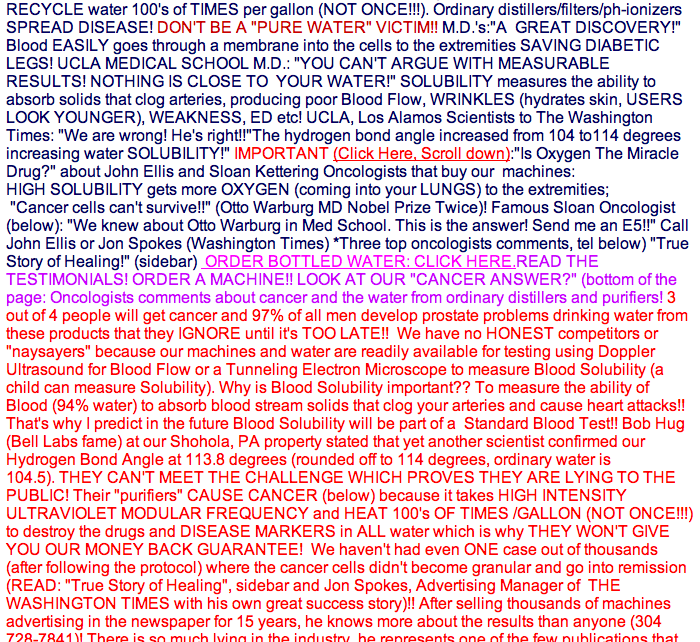 (Source)
(Source)
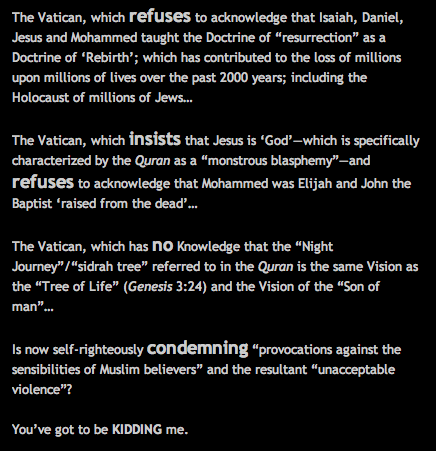 (Source - an old ATS friend, who tells me I'm an unenlightened
jerk, lol)
(Source - an old ATS friend, who tells me I'm an unenlightened
jerk, lol)
Links 'O Plenty
Another good clue is a million links to articles/rants/information buried within the web site. Generally, this indicates that the person has spent most of their life on this project, rarely a good thing.
Examples:
 (Source)
(Source)
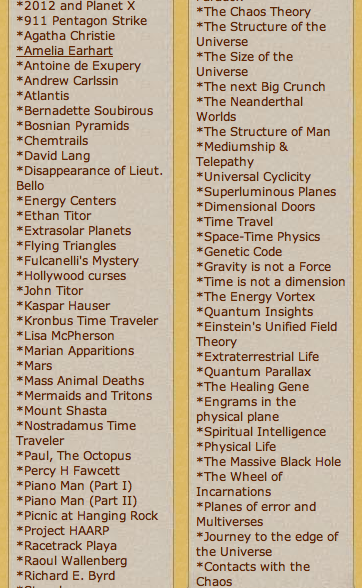 (Source)
(Source)
Gigantic Wall of Text
For some reason, kooks are seemingly allergic to the RETURN key -- the amount of white space in a post, page or message is inversely proportional to the amount of insanity contained within. If there is logic here, it would be that the harder something is to read, the more one has to concentrate to read it. Me, I'm partial to the theory that too much white space swallows your soul.
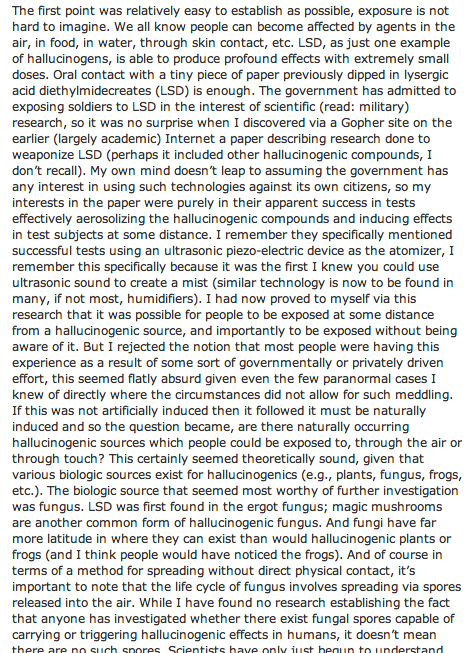 (Source)
(Source)
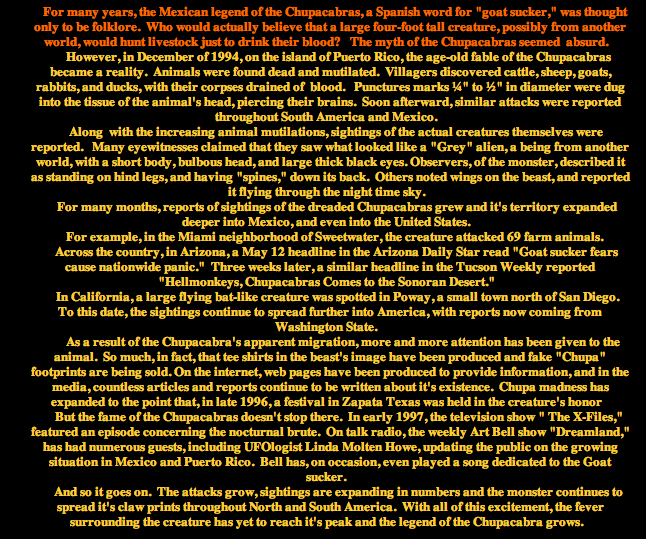 (Source)
(Source)
Page Without End
A somewhat more entertaining counterpart to the Gigantic Wall of Text, the Page Without End is also laden with text, but it's punctuated with graphics (relevant or not,) YouTube videos, and font/colour shifts, going on, it seems, forever. Some of these would take hours to get through, as the kooks behind it apparently feel that if you're forced to go to another page, your senses will return to you during the load time.
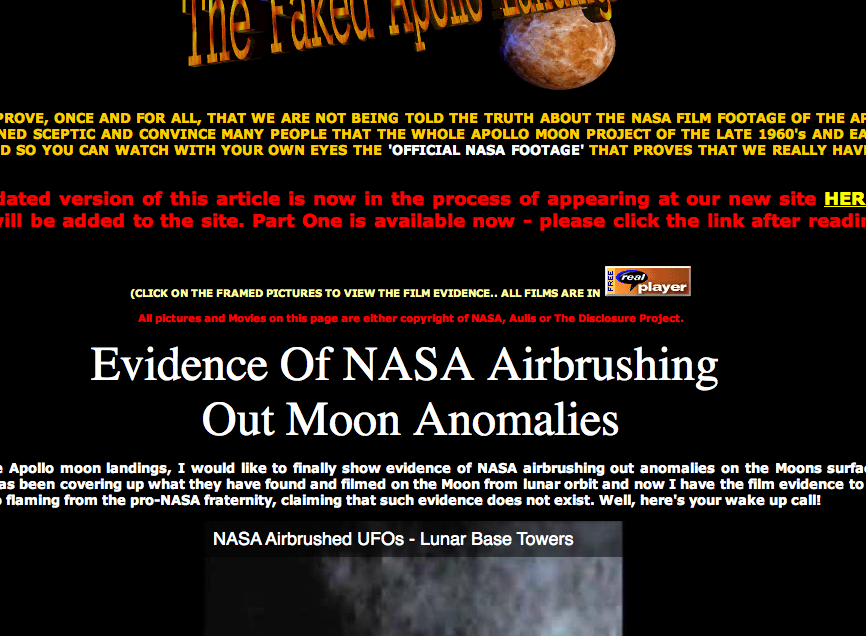 (Source)
(Source)
 (Source)
(Source)
Misrepresentation of Identity
One sure sign is someone who presents themselves as someone that they are surely not. Would Jesus announce his return to the Earth by posting on some obscure website? Or would he be more likely to eviscerate a pompous ass like Richard Dawkins on live television?
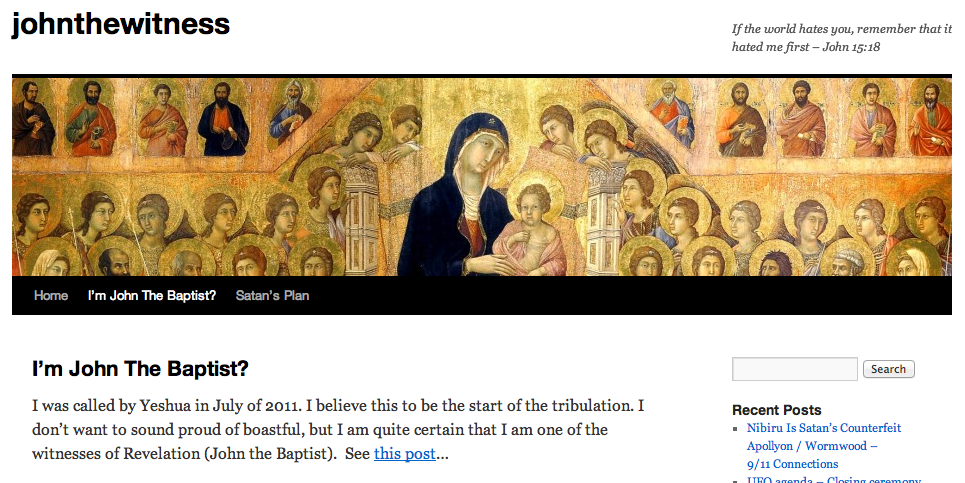 (Source)
(Source)
 (Source)
(Source)
(continued)
Now, one might say that ATS has a lot of kooks, but that's not really the case. A true kook is an over-the-top, round-the-bend, over-the-rainbow degree of craziness that often causes me to step back and, with respect, utter my best Neo from the Matrix "Whoa…" Over the decades, I've seen some of the best of the best kooks, and if you would like to dive into the world of some of these amazing speculators, I've prepared this "Illustrated Field Guide to Internet Kooks" to help you along.
The Golden Age of the Internet Kook
Sadly, while there are still plenty of kooks out there, we are past what I would define as the Golden Age -- about 1994 to 2000. This coincides with the rapid growth of Internet use and ends with the demise of many free hosting services during the bursting of the Dot-Com bubble. Kooks had long been around, I could remember them on PLATO back in the early 1970s, but the explosion of them on Usenet and the WWW in the 1990s was an amazing thing.
During this period, kooks were largely divided into two types -- interactive and dissociated. The former would happily (if insanely) answer questions and chat with interested people, while the latter would post their views and generally ignore any inquiries. Typically, interactive kooks stuck to Usenet, while dissociated ones focused on the web.
A classic Usenet kook - Serdar Argic, who had some sort of script (in 1994, somewhat advanced) to find any post in any group that referred to Turkey (even the bird) and post random rants about how the Armenians had committed genocide against the Turks, which was the opposite of what actually had happened. This, of course, led to mass complaints, as he spammed group after group, and he represented one of the first censorship debates on Usenet, as to whether to kill his posts or not. Classic kookery, I even have the t-shirt that Joel Furr sold during the uproar.
One of the best of the best: A rant in reply to someone posting a turkey chili recipe to alt.fraternity.sorority
Oh, and just because I laughed when I ran across it: Kibo's .signature, another Usenet classic (though a parody of various idiots and kooks.)
The history of Usenet kooks is thoughtfully (and randomly) documented in alt.usenet.kooks. Though the reign of various Usenet crackpots continues, the remainder of this guide will deal with web based kooks.
Tell-tale Signs
When in the wild, kooks are readily identified by their visual characteristics, some of which follow. Not all kooks will exhibit all characteristics, but, though some eagles are not bald, all eagles have wings (apart from golf scores.)
Suggestions of invalidity
While "don't believe what I tell you, do your own research!" is a great personal philosophy, it's a bit of a warning sign if it is a) repeated more than five times, b) written in bold, 300 point font, or c) spoken as regards something impossible to research, like claims of life in other galaxies, researchers who solely publish their conclusions in obscure languages, like Klingon, or the observed results of cold fusion tests. Bonus points if someone feels the need to write a whole damn essay on the subject or rants about doing your own research, while saying that they will provide the research materials.
This is, in fact, so indicative of a kook, that a handy directory of them can be generated through a quick search.
Crazy Fonts and Colours
Boy, if there's one thing that you can count on with a kook, it's a fascination with seemingly random colours, applied to text and backgrounds. I'm sure that there is a purpose somewhere, but Lord only knows what the translation might be. To me, it just makes it really annoying to read, but I'm sure that it's "insightful" in some manner.
Examples:


Links 'O Plenty
Another good clue is a million links to articles/rants/information buried within the web site. Generally, this indicates that the person has spent most of their life on this project, rarely a good thing.
Examples:


Gigantic Wall of Text
For some reason, kooks are seemingly allergic to the RETURN key -- the amount of white space in a post, page or message is inversely proportional to the amount of insanity contained within. If there is logic here, it would be that the harder something is to read, the more one has to concentrate to read it. Me, I'm partial to the theory that too much white space swallows your soul.


Page Without End
A somewhat more entertaining counterpart to the Gigantic Wall of Text, the Page Without End is also laden with text, but it's punctuated with graphics (relevant or not,) YouTube videos, and font/colour shifts, going on, it seems, forever. Some of these would take hours to get through, as the kooks behind it apparently feel that if you're forced to go to another page, your senses will return to you during the load time.


Misrepresentation of Identity
One sure sign is someone who presents themselves as someone that they are surely not. Would Jesus announce his return to the Earth by posting on some obscure website? Or would he be more likely to eviscerate a pompous ass like Richard Dawkins on live television?


(continued)
Misrepresentation of Reality
Another sign is the display of obviously falsifiable statements as truth. Only a kook would think that the United States established a "Department of Peace" in 2001 or that Josef Mengele is still alive, well, and causing mayhem in the US (a very agile 101 year old, it would seem.)
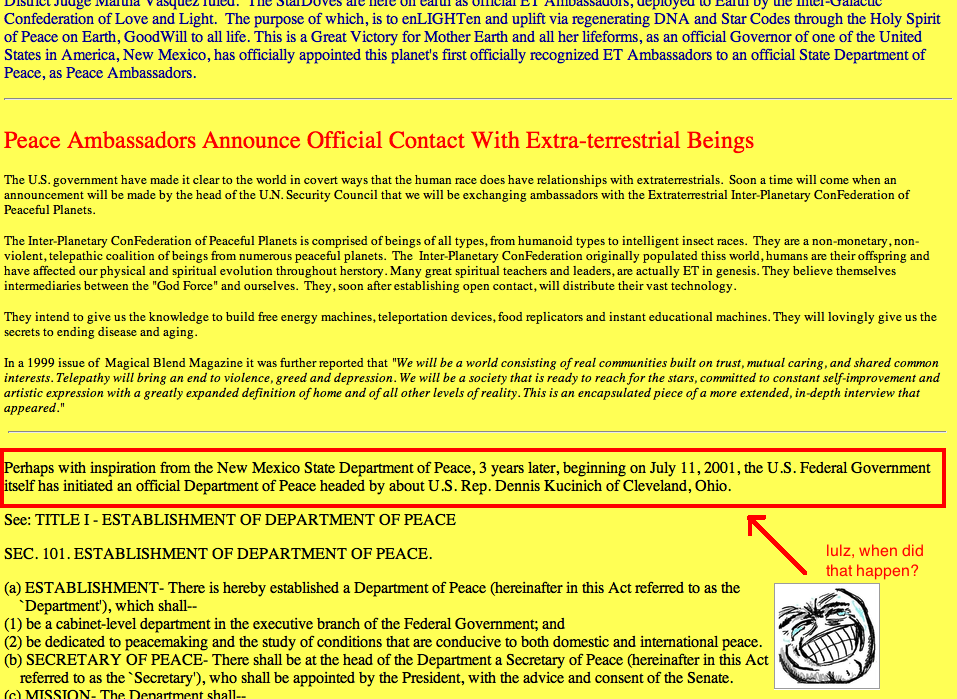 (Source)
(Source)
 (Source)
(Source)
Wow… just… wow.
Sometimes, we run across kooks who just seem to hit a home run on the crackpot scale and pull so many of these characteristics together that one is left to step back and admire the insanity. To that end, I present:
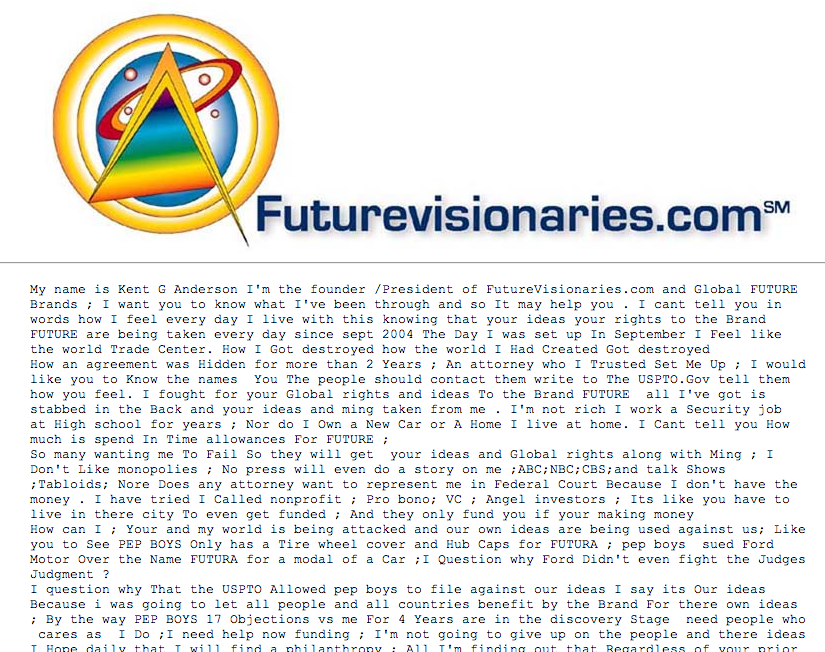 (A man who claims to have copyrighted the term "future", and wants to sue the Pep
Boys)
(A man who claims to have copyrighted the term "future", and wants to sue the Pep
Boys)
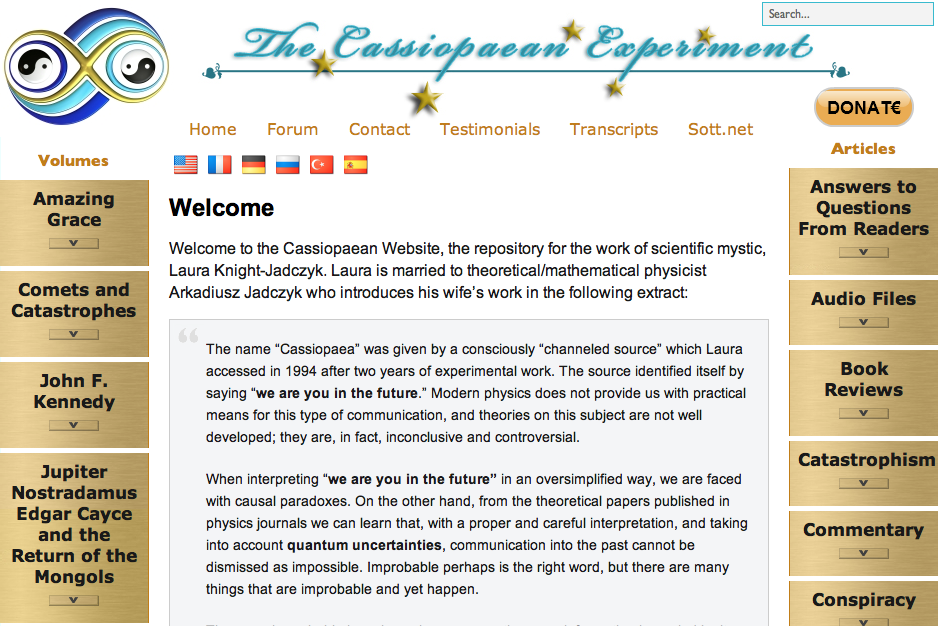 (A scientific mystic, who apparently doesn't understand the contradiction of that term)
(A scientific mystic, who apparently doesn't understand the contradiction of that term)
 (Current incarnation of the Prophet Elijah (who also was arrested for
credit card fraud, lol))
(Current incarnation of the Prophet Elijah (who also was arrested for
credit card fraud, lol))
Conclusion
I would like to thank you for your attention to this important sociological study, of the Internet kook in the wild. And please, remember:

Of course, on the Internet, we're always "seeing something", so carry on
Kindly use this thread for your kook sightings, reports of kook behaviour and updates on signs and symptoms.
Another sign is the display of obviously falsifiable statements as truth. Only a kook would think that the United States established a "Department of Peace" in 2001 or that Josef Mengele is still alive, well, and causing mayhem in the US (a very agile 101 year old, it would seem.)


Wow… just… wow.
Sometimes, we run across kooks who just seem to hit a home run on the crackpot scale and pull so many of these characteristics together that one is left to step back and admire the insanity. To that end, I present:



Conclusion
I would like to thank you for your attention to this important sociological study, of the Internet kook in the wild. And please, remember:

Of course, on the Internet, we're always "seeing something", so carry on
Kindly use this thread for your kook sightings, reports of kook behaviour and updates on signs and symptoms.
edit on 16-9-2012 by adjensen
because: tag repair
Originally posted by GreenGlassDoor
Let me get this straight: you wrote a rant about rants?
Naw. Think of it as a comprehensive compilation of goofballs and their attributes, collated over 20 years of scientific observation.
YOU OUTTED ME!!!!!
Awesome OP adjensen! Entertaining, uplifting, and informative! Kudos and high praise from this particular ATS member/outcast/resident kook!
~Heff
Awesome OP adjensen! Entertaining, uplifting, and informative! Kudos and high praise from this particular ATS member/outcast/resident kook!
~Heff
not a bAd thread but it made my head hurt.
i think the kooks here always get band -nice job thanks for the archive
i think the kooks here always get band -nice job thanks for the archive
One of the kookiest of the kooks is Sorcha Faal. Self described as anything from Jesus incarnate to (insert
ego tripping name here). This person writes some convincing stories that are made up of a thin shell of truth to sell the big lie within. A discussion
board I used to post on had anything from this person on the not allowed list. There was some speculation that it was a female Russian disinformation
agent, but that was never proved. For some expert fear mongering follow the link in the first sentence.
edit on 16-9-2012 by happykat39
because: added info
Wow! That was a ton of work on your part!
Great Job!
PS- You do know that you just pee'd on lot's of folks here, right?
Great Job!
PS- You do know that you just pee'd on lot's of folks here, right?
edit on 16-9-2012 by tvtexan because: (no reason given)
LOL Nice job I didn't read it all (it made my head hurt) but nice job! I think I've met a few kooks on the interwebs!!
Originally posted by happykat39
One of the kookiest of the kooks is Sorcha Faal. Self described as anything from Jesus incarnate to (insert ego tripping name here).
Nice cite -- I'd suggest that it bears no small resemblance to "Dig Dug", lol.
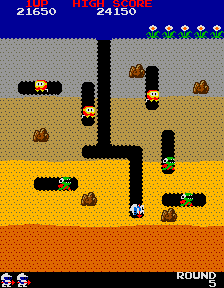
edit on 16-9-2012 by adjensen because: oopsies
reply to post by adjensen
Great thread!!
It's not often I take the effort of reading an entire thread but yours was so entertaining that I can't wait for more kooky entries.
I'll share the most obvious here since it was a big hype when I joined ATS.(although I still don't think she believed her own rambling, she's just happy to make some money)
Please give it up for....... Blossom Goodchild
Here's the ATS thread that started it all...
spaceship to appear on Oct.14th, 2008
A Google video with "the message"
I know we are not suppose to talk about banned members but boy oh boy....skipper was a genuine kook. Man...what fun we had.
Peace
Great thread!!
It's not often I take the effort of reading an entire thread but yours was so entertaining that I can't wait for more kooky entries.
I'll share the most obvious here since it was a big hype when I joined ATS.(although I still don't think she believed her own rambling, she's just happy to make some money)
Please give it up for....... Blossom Goodchild
Here's the ATS thread that started it all...
spaceship to appear on Oct.14th, 2008
A Google video with "the message"
I know we are not suppose to talk about banned members but boy oh boy....skipper was a genuine kook. Man...what fun we had.
Peace
edit on 16-9-2012 by operation mindcrime because: (no reason given)
Thanks, This thread brought a smile to my face. Lots of old memories returned. The days of Usenet, telnet and BBS. I was a Kook of the Golden era
myself.
I went offline for a few years during the Dot Com crash, and come back to see an entirely new world here.
The advertising and marketing has really grown. Still frequent Telnet myself these days. But it sure is a different world on the net.
S+F
I went offline for a few years during the Dot Com crash, and come back to see an entirely new world here.
The advertising and marketing has really grown. Still frequent Telnet myself these days. But it sure is a different world on the net.
S+F
Awesome thread. S&F
Oh to connect to a B.B.S. with a 9600bps modem again.....gone are the glory days of computing.
Everyone was on a level playing field - we were all amateurs - and with limited access to our favorite BBS's, meant that we were all technically hackers as the time in between was invariably spent searching for dial-in servers. For the oldies who remember .........GOD.....Password......home.... and the not so rare.....flower. .
Scientific analysis was done on the affects of different types of beverages on the recently made "stand alone keyboard".
The acidic smell of electrolytic capacitors being heated for weeks on end as some useless algorithm ticks away solving a problem that was only created to prove that it could be done.
Back to the topic.....as the op states, the 90's were golden for kooks & religious types to spread(dribble) their ideas/theories.
Alex Collier
Alex Newell
Spin theory
Any number of former US servicemen who saw "something".
Any number of former US servicemen who said "something" and vanished.
Reptilian underground cities.
The pyramids were ....a water pump, power generator, stargate, galactic "real-time" telescope and occasionally even......wait for it.......the ridiculousness of it will astound you.......a.....tomb.
Sorcha fail was just a "try-hard" compared to the greats.
Oh to connect to a B.B.S. with a 9600bps modem again.....gone are the glory days of computing.
Everyone was on a level playing field - we were all amateurs - and with limited access to our favorite BBS's, meant that we were all technically hackers as the time in between was invariably spent searching for dial-in servers. For the oldies who remember .........GOD.....Password......home.... and the not so rare.....flower. .
Scientific analysis was done on the affects of different types of beverages on the recently made "stand alone keyboard".
The acidic smell of electrolytic capacitors being heated for weeks on end as some useless algorithm ticks away solving a problem that was only created to prove that it could be done.
Back to the topic.....as the op states, the 90's were golden for kooks & religious types to spread(dribble) their ideas/theories.
Alex Collier
Alex Newell
Spin theory
Any number of former US servicemen who saw "something".
Any number of former US servicemen who said "something" and vanished.
Reptilian underground cities.
The pyramids were ....a water pump, power generator, stargate, galactic "real-time" telescope and occasionally even......wait for it.......the ridiculousness of it will astound you.......a.....tomb.
Sorcha fail was just a "try-hard" compared to the greats.
edit on 16/9/2012 by OccamAssassin because: (no reason given)
Hey, I like kooks from time to time. It's entertaining to see people get all twisted over them.
Unfortunately as the powers get a their hold on the internet, those kooks will slowly go the way of the dodo as the powers can't stand kookiness in their frigid rigidity.
Unfortunately as the powers get a their hold on the internet, those kooks will slowly go the way of the dodo as the powers can't stand kookiness in their frigid rigidity.
Very interesting thread OP.
Can I ask what motivated you to make this now?
I agree with many of your sentiments, but also think they're slightly flawed in other ways.
Bright colours, big fonts and asthetics in general can be used as a good tool to provide distraction from the actual content and it's validity... However, does that account for asthetics merely being used for enthesis?
Your comment on "don't believe me, do your own research" is also interesting.
I agree that term can be completely mis-leading when you are provived with endless links to "resources", as those resources could them selves be completely biased.
However, that statement, I think is one we should all adere to, no matter the circumstances, even if it's something that "cannot be proved" such as galactic travelors.
If your working within clear boundries of *facts* then "do your own research" is a fair enough comment, however, I'm lead to believe that the comment is a fair one, even if the subject matter is speculative.
In my opinion, the evidence that "galactic visitors" are here, is every where in abundance. I wouldn't waste hours of my time trying to convince skeptics however, I'd advise them to go do their home work, whether they reach the same conclusions as me or not is a different matter... But I for one, know I am certainly NOT a kook for suggesting this avenue to said person.
Quite intersting choice of examples you have provided us with also, you have provided the material, a basic theory, and yet no further explanantion. Are you leading us to "do our own research", or are you expecting us to believe you based on your few words and fancy screen shots?
Its great to be able to hear from a member who is familiar with the history of the internet, however, you your self have not really made any factual commitments, you have just offered your own conclusion based on assumtions.
As I say, some are correct in my opinion, but there's still many variables to be taken into account.. Would you have us believe anyone who uses the "tactics" are internet kooks?
Going from your sources and "evidence" I'm inclined to say some of your assumpions are correct but you also have your own personal biases that have infuenced your presentation here.
Can I ask what motivated you to make this now?
I agree with many of your sentiments, but also think they're slightly flawed in other ways.
Bright colours, big fonts and asthetics in general can be used as a good tool to provide distraction from the actual content and it's validity... However, does that account for asthetics merely being used for enthesis?
Your comment on "don't believe me, do your own research" is also interesting.
I agree that term can be completely mis-leading when you are provived with endless links to "resources", as those resources could them selves be completely biased.
However, that statement, I think is one we should all adere to, no matter the circumstances, even if it's something that "cannot be proved" such as galactic travelors.
If your working within clear boundries of *facts* then "do your own research" is a fair enough comment, however, I'm lead to believe that the comment is a fair one, even if the subject matter is speculative.
In my opinion, the evidence that "galactic visitors" are here, is every where in abundance. I wouldn't waste hours of my time trying to convince skeptics however, I'd advise them to go do their home work, whether they reach the same conclusions as me or not is a different matter... But I for one, know I am certainly NOT a kook for suggesting this avenue to said person.
Quite intersting choice of examples you have provided us with also, you have provided the material, a basic theory, and yet no further explanantion. Are you leading us to "do our own research", or are you expecting us to believe you based on your few words and fancy screen shots?
Its great to be able to hear from a member who is familiar with the history of the internet, however, you your self have not really made any factual commitments, you have just offered your own conclusion based on assumtions.
As I say, some are correct in my opinion, but there's still many variables to be taken into account.. Would you have us believe anyone who uses the "tactics" are internet kooks?
Going from your sources and "evidence" I'm inclined to say some of your assumpions are correct but you also have your own personal biases that have infuenced your presentation here.
Great post. Not heard "kook" in a long time
I'll just lave this here...
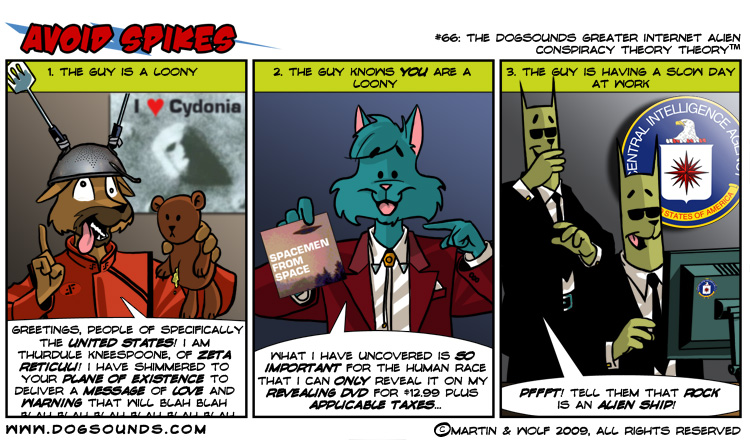
I'll just lave this here...

What a great thread. I have seen some kooks, let me tell you. On Atlantis Rising there was this dude who would always chime into a thread talking
about exopolitics and how the Venusians would not allow it to happen, etc, etc.
Nice guy, sane in every way except when he would chime in about exopolitics. Even talked about how he met his fiance (and eventual wife) on eharmony.
I have been on message boards since the late 90s. Not a real long time. But I recall geocities, and the horrible web designs seen there. I also recall ATS when it was but an infant back in 2001 (i didn't register for 6 more years, when I noticed it had really grown and caught my attention).
You took me back through some memories. Thanks for sharing.
Nice guy, sane in every way except when he would chime in about exopolitics. Even talked about how he met his fiance (and eventual wife) on eharmony.
I have been on message boards since the late 90s. Not a real long time. But I recall geocities, and the horrible web designs seen there. I also recall ATS when it was but an infant back in 2001 (i didn't register for 6 more years, when I noticed it had really grown and caught my attention).
You took me back through some memories. Thanks for sharing.
I can tell you put a lot of work into this (kook?), lol, and I must say it is full of winz. The ones I notice more of than anything are those who
think the whole world is out to get them, that they are being followed and set up by the government, etc. We've all seen them on ATS I'm sure. I
enjoyed reading all of this, so thanks for taking the time to put it together. Everyone remember to donate to the fund dedicated to capturing and
bringing to justice Nazi war criminals. This is a very serious matter it would seem.
new topics
-
How long till it starts
US Political Madness: 46 minutes ago -
USSS Agent Fired for Having Sex In Michelle Obama's Bathroom
US Political Madness: 2 hours ago -
Watching TV
Jokes, Puns, & Pranks: 4 hours ago
top topics
-
RFK is Trumps health pick
2024 Elections: 13 hours ago, 19 flags -
Watching TV
Jokes, Puns, & Pranks: 4 hours ago, 6 flags -
USSS Agent Fired for Having Sex In Michelle Obama's Bathroom
US Political Madness: 2 hours ago, 6 flags -
How long till it starts
US Political Madness: 46 minutes ago, 5 flags
active topics
-
RFK is Trumps health pick
2024 Elections • 9 • : nugget1 -
WATCH LIVE: US Congress hearing on UFOs, unidentified anomalous phenomena
Aliens and UFOs • 70 • : Lazy88 -
President-Elect DONALD TRUMP's 2nd-Term Administration Takes Shape.
Political Ideology • 194 • : matafuchs -
How long till it starts
US Political Madness • 1 • : stosh64 -
The art of being offended
Social Issues and Civil Unrest • 39 • : Oldcarpy2 -
Alex Jones Reinstated on X
Education and Media • 88 • : NoCorruptionAllowed -
Speaker Johnson Orders Entire Biden Administration to Preserve and Retain All Records - Documents
US Political Madness • 70 • : xuenchen -
USSS Agent Fired for Having Sex In Michelle Obama's Bathroom
US Political Madness • 13 • : CriticalStinker -
-@TH3WH17ERABB17- -Q- ---TIME TO SHOW THE WORLD--- -Part- --44--
Dissecting Disinformation • 3271 • : 777Vader -
Thanksgiving 2024
Member Art • 18 • : BingoMcGoof

